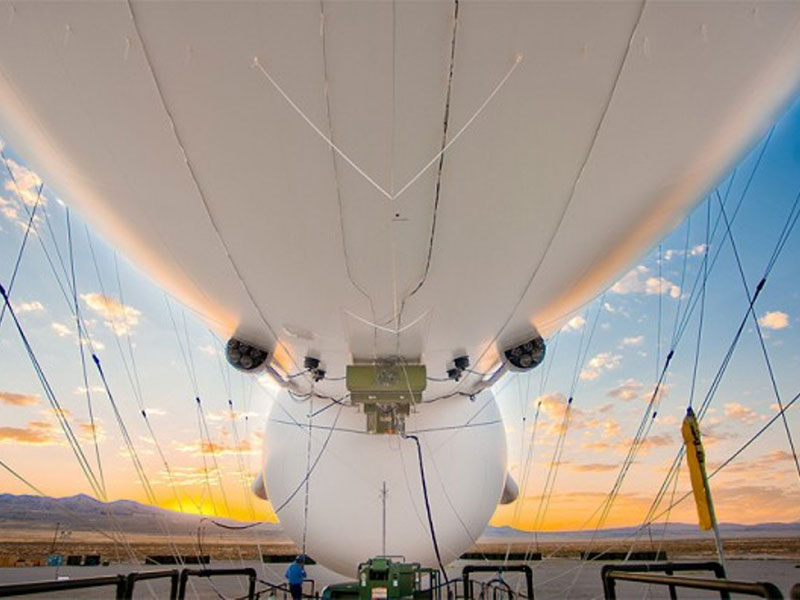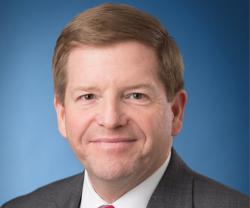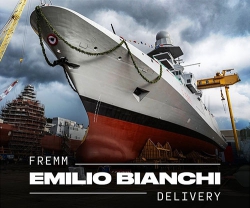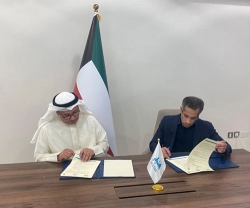JLENS Demos Tactical Ballistic Missile Defense Capability
21.02.2013 North America
Enemy tactical ballistic missiles may soon be easier to detect and track. During a series of recent tests, a Raytheon JLENS demonstrated tactical ballistic missile defense (TBMD) capability when it detected and tracked a total of 4 ballistic-missile surrogates during their ascent (boost) phase.
During the test, the JLENS X-Band radar tracked two ripple-fired and two individually fired ballistic-missile surrogates. The missiles flew flight profiles similar to the profiles enemy tactical ballistic missiles might fly in high-threat regions of the globe.
“Along with other systems in Raytheon's family of X-Band radars, JLENS can provide a robust early warning and tracking capability against ballistic missiles,” said David Gulla, Vice President of Global Integrated Sensors for Raytheon's Integrated Defense Systems business.
“This TBMD demonstration and JLENS' other recent successes prove that the system is ready to deploy for a combatant commander operational evaluation,” he added.
JLENS demonstrated its capability against cruise missiles when it enabled Patriot and Standard Missile-6 intercepts of cruise-missile surrogates during separate tests. JLENS also completed two developmental tests and demonstrated its ability to stay aloft for long durations.
“JLENS' TBMD capability gives combatant commands another tool they can use to help protect the U.S., deployed forces, our allies and friends from the growing ballistic missile threat,” said Dean Barten, the U.S. Army's JLENS Program Manager.
“JLENS' TBMD capability, when coupled with its ability to conduct 360-degree long-range surveillance capability and simultaneously detect and engage threats like swarming boats and anti-ship cruise missiles from up to 340 miles away, gives commanders a powerful proven capability,” Barten added.
JLENS, an elevated, persistent over-the-horizon sensor system, uses a powerful integrated radar system to detect, track and target a variety of threats. This capability better enables commanders to defend against threats including hostile cruise missiles; low-flying manned and unmanned aircraft; and moving surface vehicles such as boats, automobiles and trucks; and to provide ascent-phase detection of tactical ballistic missiles and large caliber rockets.
During the test, the JLENS X-Band radar tracked two ripple-fired and two individually fired ballistic-missile surrogates. The missiles flew flight profiles similar to the profiles enemy tactical ballistic missiles might fly in high-threat regions of the globe.
“Along with other systems in Raytheon's family of X-Band radars, JLENS can provide a robust early warning and tracking capability against ballistic missiles,” said David Gulla, Vice President of Global Integrated Sensors for Raytheon's Integrated Defense Systems business.
“This TBMD demonstration and JLENS' other recent successes prove that the system is ready to deploy for a combatant commander operational evaluation,” he added.
JLENS demonstrated its capability against cruise missiles when it enabled Patriot and Standard Missile-6 intercepts of cruise-missile surrogates during separate tests. JLENS also completed two developmental tests and demonstrated its ability to stay aloft for long durations.
“JLENS' TBMD capability gives combatant commands another tool they can use to help protect the U.S., deployed forces, our allies and friends from the growing ballistic missile threat,” said Dean Barten, the U.S. Army's JLENS Program Manager.
“JLENS' TBMD capability, when coupled with its ability to conduct 360-degree long-range surveillance capability and simultaneously detect and engage threats like swarming boats and anti-ship cruise missiles from up to 340 miles away, gives commanders a powerful proven capability,” Barten added.
JLENS, an elevated, persistent over-the-horizon sensor system, uses a powerful integrated radar system to detect, track and target a variety of threats. This capability better enables commanders to defend against threats including hostile cruise missiles; low-flying manned and unmanned aircraft; and moving surface vehicles such as boats, automobiles and trucks; and to provide ascent-phase detection of tactical ballistic missiles and large caliber rockets.
Latest news
Latest events
DSEI 2025
09 - 12 Sep 2025Excel, London - United KingdomIntersec Saudi Arabia
29 Sep - 01 Oct 2025Riyadh International Exhibition & Convention Centre - Saudi ArabiaDubai International Air Chiefs’ Conference (DIACC 2025)
16 Nov 2025Atlantis, The Palm Dubai - United Arab EmiratesDubai Airshow
17 - 21 Nov 2025Dubai World Central (DWC) - United Arab Emirates






















